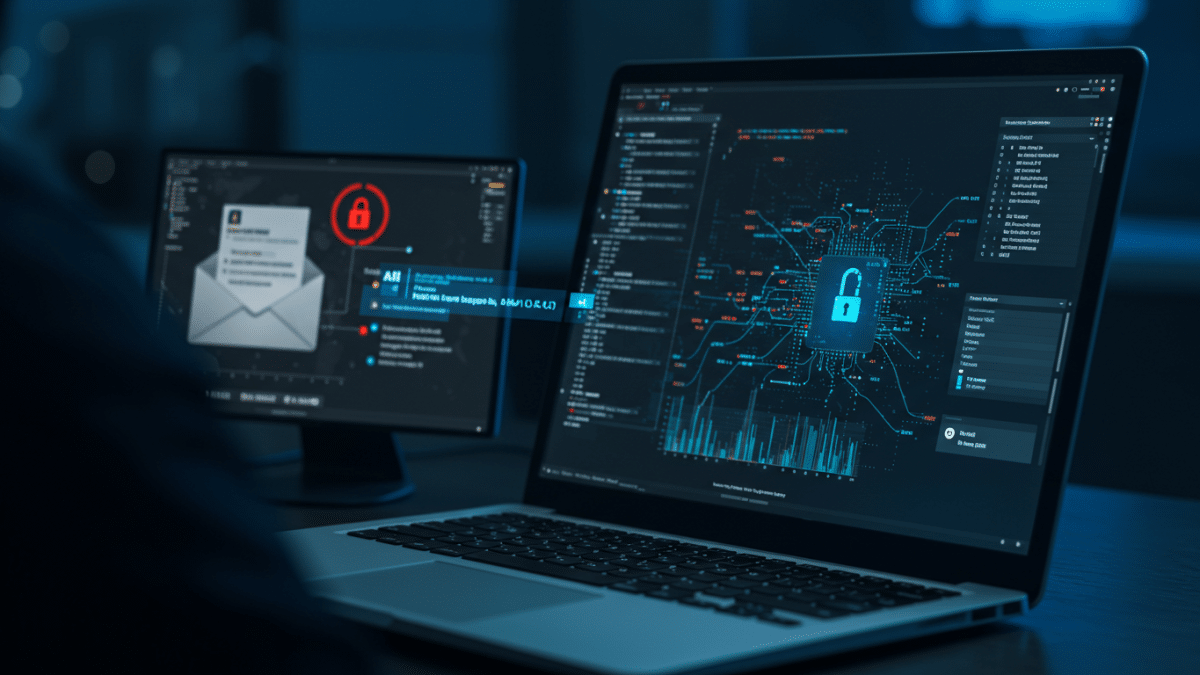
Zero-Day Vulnerabilities: The Unknown Threats Lurking in Your Systems
January 3, 2025
The Foundation of Security: Mastering the Art of Strong Passwords
January 7, 2025The threat landscape is constantly evolving, and cybercriminals are now leveraging the power of artificial intelligence (AI) to create even more sophisticated and convincing phishing scams. The recent article, “AI-generated phishing scams target corporate executives,” highlights a concerning trend: attackers are using AI to craft highly targeted and personalized phishing emails that are specifically designed to deceive even the most security-conscious individuals. These attacks are sometimes refered to as “spear phishing”.
As your trusted cybersecurity partner, Krypto IT is committed to keeping you informed about emerging threats. This blog post will delve into the alarming world of AI-generated phishing, explain how these scams work, and provide actionable steps to protect your organization and its leadership.
The Rise of AI-Generated Phishing
Traditional phishing scams often rely on generic templates and poorly written messages that are relatively easy to spot. However, AI is changing the game. AI-powered tools can now:
- Generate Highly Realistic Content: AI can create phishing emails that are grammatically correct, professionally written, and tailored to the specific target’s interests and role within the organization.
- Mimic Writing Styles: By analyzing publicly available information and previous communications, AI can mimic the writing style of trusted individuals, such as colleagues, partners, or even the executive’s own style.
- Automate and Scale Attacks: AI enables attackers to automate the creation and distribution of phishing emails, allowing them to target a large number of individuals simultaneously.
- Craft Convincing Narratives: AI can generate compelling stories and scenarios that are more likely to trick recipients into taking the desired action, such as clicking a malicious link or downloading an infected attachment.
- Bypass Traditional Security Filters: AI-generated phishing emails can be designed to evade spam filters and other security measures that rely on detecting known patterns and keywords.
Why Corporate Executives are Prime Targets
Corporate executives are particularly attractive targets for AI-generated phishing attacks because:
- Access to Sensitive Information: Executives often have access to highly confidential data, financial accounts, and critical systems.
- Authority and Influence: A compromised executive account can be used to send phishing emails to other employees or partners, leveraging the executive’s authority to increase the likelihood of success.
- Busy Schedules: Executives often have demanding schedules and may be more likely to overlook red flags in emails due to time constraints.
- Publicly Available Information: Information about executives’ roles, responsibilities, and interests is often readily available online, making it easier for AI to craft personalized phishing emails.
Best Practices, Policies, and Procedures for Combating AI-Generated Phishing
1. Enhanced Security Awareness Training:
- Policy: Implement mandatory security awareness training for all employees, with a specific focus on identifying and reporting AI-generated phishing attempts.
- Procedure:
- Conduct regular training sessions that cover the latest phishing techniques, including AI-powered scams.
- Use realistic phishing simulations to test employees’ ability to spot sophisticated phishing emails.
- Provide specific guidance on identifying red flags in emails, such as unusual sender addresses, suspicious links, and urgent requests for sensitive information.
- Emphasize the importance of verifying requests through alternative channels (e.g., phone call) before taking action.
2. Advanced Email Security Solutions:
- Policy: Deploy advanced email security solutions that leverage AI and machine learning to detect and block AI-generated phishing emails.
- Procedure:
- Implement email filtering systems that analyze email content, sender reputation, and other factors to identify suspicious emails.
- Utilize sandboxing technology to detonate and analyze suspicious attachments in a safe environment.
- Employ email authentication protocols (e.g., SPF, DKIM, DMARC) to verify the authenticity of email senders.
3. Multi-Factor Authentication (MFA):
- Policy: Enforce the use of multi-factor authentication (MFA) for all corporate accounts, especially for executives and users with access to sensitive data.
- Procedure:
- Require users to provide at least two different authentication factors (e.g., password and a one-time code from an authenticator app) before granting access to accounts.
4. Strict Access Controls:
- Policy: Implement the principle of least privilege, granting users only the minimum access necessary to perform their job duties.
- Procedure:
- Regularly review and update user access rights.
- Use role-based access control (RBAC) to manage permissions.
5. Data Loss Prevention (DLP):
- Policy: Implement DLP solutions to monitor and control the flow of sensitive data, preventing unauthorized transfers or disclosures.
- Procedure:
- Define DLP rules and policies that specify what types of data are considered sensitive.
- Configure DLP systems to block or alert on suspicious data transfers.
6. Incident Response Plan:
- Policy: Develop a comprehensive incident response plan that includes procedures for responding to phishing incidents, including those involving AI-generated emails.
- Procedure:
- Establish an incident response team with clear roles and responsibilities.
- Conduct regular incident response drills to test the plan’s effectiveness.
- Define procedures for reporting, investigating, containing, and recovering from phishing attacks.
7. Executive-Specific Security Measures:
- Policy: Implement additional security measures for corporate executives, such as enhanced email monitoring, dedicated security training, and stricter access controls.
- Procedure:
- Provide executives with dedicated security awareness training that addresses the specific threats they face.
- Implement executive-level threat intelligence monitoring to identify potential attacks targeting them.
- Consider using secure communication channels for highly sensitive information.
Krypto IT: Your Partner in Combating Advanced Phishing Threats
AI-generated phishing represents a significant evolution in the threat landscape, and organizations must adapt their defenses accordingly.
Krypto IT can help you protect your organization and its executives from these sophisticated attacks. Our services include advanced threat detection, security awareness training, email security solutions, incident response planning, and vulnerability assessments. Contact us today for a free consultation and let us help you build a robust defense against the evolving threat of AI-powered phishing.
Don’t let AI outsmart your security. Be proactive. Be prepared. Be secure with Krypto IT.
#Cybersecurity #Phishing #ArtificialIntelligence #SpearPhishing #InfoSec #CyberDefense #EmailSecurity #DataProtection #ExecutiveProtection #SecurityAwareness #KryptoIT #CyberThreats #IncidentResponse #TechSecurity




